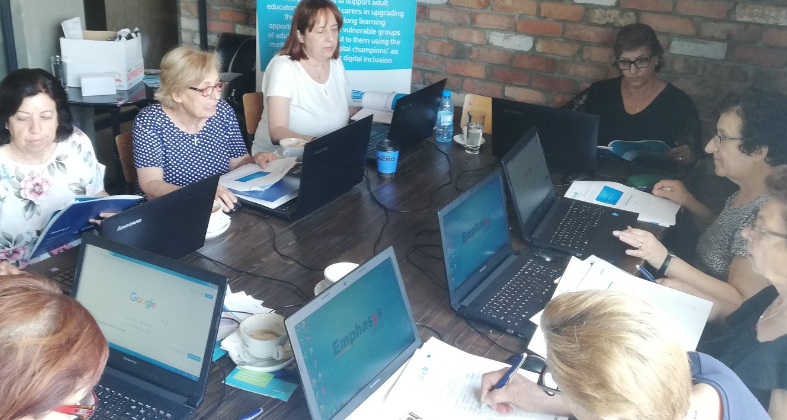What was the main purpose of the initiative?
“The primary purpose of the project was to encourage both formal and informal educators to create Community Digital Champions,” says Tanya Cook from the A1 Community Works. “The project created a methodology on how to engage learners at the end of a funded programme or learners in remote areas where financially supported projects never reach. Community Digital Champions are highly motivated volunteers, willing to invest their time to digitally empower people in their community. They are usually trained by professional educators as informal trainers, mentors, and coaches.
We live in a digital world, where governments, regional and local authorities want everyone to interact with them digitally. A lack of digital skills and access can “harm” any individual, resulting in poorer health outcomes and a lower life expectancy, increased loneliness and social isolation, as well as reduced access to jobs and education. Additionally, it can lead to paying more for essential goods and services, financial exclusion, or an increased risk of falling into poverty. Digitally excluded people are at risk of being “forgotten” as they lack a voice and visibility in a world, where community leaders are swayed by social media and online petitions. Moreover, the impact of COVID-19 has reinforced the importance of these digital skills.”
How does your project foster the outreach and access approach?
“This project is about direct action in communities. It is a bottom-up approach to learning focused on helping people to gain practical digital skills to enhance their life chances and feelings of inclusion. It is not primarily about academic qualifications, although people who become digitally knowledgeable may decide to acquire formal qualifications.
Community is defined by people who, regardless of their backgrounds, have been able to accept and transcend their differences, enabling them to communicate effectively and openly and to work together toward goals identified as being for their common good. Refugees, long term unemployed people, people with disabilities or learning differences, homeless people, as well as those living in remote rural areas are some examples of communities.”
What was the best practice learned from this project that you would like to share?
“As an educator, you need to leave the classroom and go into the places where communities congregate. The educator’s role is then to discover what the learner needs to do digitally and support them. After that, you can persuade them to expand their skills. Everything starts with individuals and their communities. Do not say that you will teach someone word when they want to know how to download a knitting pattern. Shown them how to download knitting patterns and then help them discover more. The Community Digital Champion’s role is to “boldly go where no trainer has gone before!” The ultimate goal is 100% digital inclusion.”
Text: Dimitris Charmpis, EAEA. Photos: Digital Champions for Community Success

Digital Champions for Community Success
Category: National and Transnational initiatives
Coordinator: A1 Community Works
Country: United Kingdom, Germany, Italy, and Cyprus
Focus: Empowerment of underrepresented adults through digital skills
Outreach and access approach: : Online training tool and work methodology for adult educators of vulnerable groups
Resources: DigitalChampions.community website

